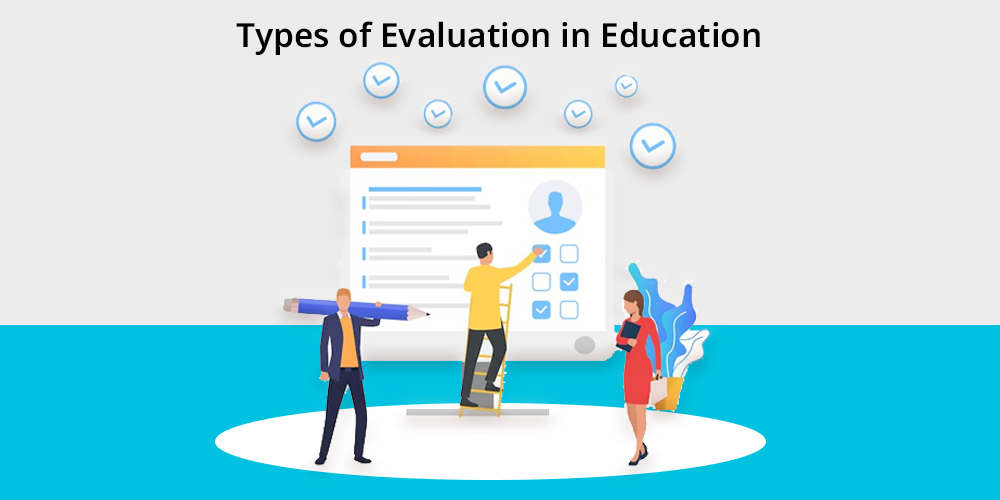
In the complex ecosystem of education, testing and assessment serve as critical tools for measuring learning, guiding instruction, and documenting academic progress. Far from being simple measurements, modern assessment approaches represent sophisticated systems designed to capture the multidimensional nature of student learning while providing actionable insights for educators, students, and educational institutions.
This article explores the landscape of contemporary educational testing, its purposes, methodologies, and evolving best practices.
The Purpose and Evolution of Educational Testing
Assessment in education has undergone significant transformation throughout history, evolving from simple recitation of memorized facts to complex evaluations of critical thinking, problem-solving, and practical application of knowledge.
Historical Development
The journey of educational testing reflects changing pedagogical philosophies:
- Early 20th Century: Standardized testing emerged, focused primarily on measuring academic aptitude and achievement through objective measures.
- Mid-20th Century: Recognition of multiple intelligences and diverse learning styles began influencing assessment design.
- Late 20th Century: Performance-based assessment gained prominence, emphasizing authentic demonstrations of learning.
- 21st Century: Digital transformation and data analytics have enabled adaptive testing and continuous assessment models.
Contemporary Purposes of Assessment
Modern testing serves multiple interconnected functions:
- Measuring Achievement: Documenting student mastery of specific learning objectives and standards.
- Guiding Instruction: Providing feedback that informs teaching strategies and curriculum adjustments.
- Motivating Learning: Establishing clear goals and recognizing progress to encourage student engagement.
- Program Evaluation: Gathering data to assess the effectiveness of educational approaches and interventions.
- Accountability: Demonstrating educational outcomes to stakeholders, including parents, administrators, and policymakers.
- Selection and Placement: Informing decisions about course placement, program admission, and educational pathways.
Types of Educational Assessments
The assessment landscape encompasses diverse approaches, each serving specific purposes within the educational process.
Formative vs. Summative Assessment
These complementary approaches differ in timing, purpose, and impact:
Formative Assessment
- Occurs throughout the learning process
- Provides ongoing feedback to guide improvement
- Often low-stakes or no-stakes in terms of grading
- Examples include classroom questioning, practice exercises, and quick checks for understanding
Summative Assessment
- Takes place at the conclusion of learning units
- Evaluates achievement against defined standards
- Typically higher-stakes and contributes significantly to grades
- Examples include final exams, culminating projects, and standardized tests
Norm-Referenced vs. Criterion-Referenced Testing
These approaches differ in how student performance is interpreted:
Norm-Referenced Tests
- Compare student performance to peers (the “norm group”)
- Designed to differentiate between students and create distributions
- Results often reported as percentiles or standard scores
- Examples include many college entrance exams and IQ tests
Criterion-Referenced Tests
- Measure performance against predetermined standards
- Focus on what students know and can do, regardless of peer performance
- Results typically reported as proficiency levels or percentage correct
- Examples include most classroom tests and standards-based assessments
Objective vs. Performance-Based Assessment
These approaches differ in the nature of student responses and evaluation methods:
Objective Assessment
- Employs items with definite correct answers
- Includes multiple-choice, true/false, and matching formats
- Offers efficiency in administration and scoring
- Particularly effective for measuring factual knowledge and basic concepts
Performance-Based Assessment
- Requires students to create products or perform tasks
- Includes essays, projects, presentations, and demonstrations
- Evaluates complex skills and authentic application of knowledge
- Often uses rubrics to guide evaluation and provide feedback
When comparing student performance across different assessment types, educators often need to convert and weight various scores. Tools like a weighted grade calculator help ensure fair and accurate representation of achievement across diverse assessment methods.
Standardized Testing in Education
Standardized tests remain influential components of educational assessment despite ongoing debates about their appropriate role and limitations.
Major Types of Standardized Tests
The educational landscape includes several categories of standardized assessments:
Achievement Tests
- Measure mastery of specific curriculum content
- Examples include state assessments aligned with academic standards
- Often used for accountability and program evaluation
Aptitude Tests
- Assess potential for future learning or performance
- Examples include college entrance exams (SAT, ACT)
- Used primarily for selection and placement decisions
Diagnostic Tests
- Identify specific learning needs or difficulties
- Examples include reading inventories and skill-specific assessments
- Guide targeted interventions and support services
Benefits and Limitations
Standardized testing offers certain advantages while presenting significant challenges:
Advantages
- Provides comparable data across diverse settings
- Offers objective measures less subject to individual bias
- Efficiently assesses large groups of students
- Creates accountability for educational outcomes
Limitations
- May narrowly define success and learning
- Can drive curriculum narrowing (“teaching to the test”)
- Often fails to capture complex thinking and creativity
- May disadvantage students from certain cultural backgrounds or with test anxiety
Alternative and Authentic Assessment Approaches
Recognizing the limitations of traditional testing, educators increasingly employ alternative approaches that better capture the depth and breadth of student learning.
Portfolio Assessment
This approach involves the systematic collection of student work over time:
- Showcases development and growth through multiple samples
- May include student reflection on learning processes
- Demonstrates both products and processes of learning
- Provides rich context for evaluation and feedback
Project-Based Assessment
Complex, extended learning activities serve as both instructional approaches and assessment opportunities:
- Engages students in authentic problem-solving
- Integrates knowledge across multiple domains
- Develops collaboration and communication skills
- Results in tangible products demonstrating learning
Performance Tasks and Demonstrations
These assessments require students to apply knowledge in realistic scenarios:
- Simulates real-world application of skills
- Often involves hands-on demonstration of competence
- May include audience feedback or expert evaluation
- Provides authentic context for knowledge application
Digital Transformation in Assessment
Technology has revolutionized educational testing, creating new possibilities for assessment design, administration, and analysis.
Computer-Adaptive Testing
These sophisticated assessments adjust to student performance in real-time:
- Questions increase or decrease in difficulty based on previous answers
- Provides more precise measurement with fewer items
- Reduces testing time while maintaining accuracy
- Examples include GMAT, GRE, and some state assessments
Digital Portfolios and Learning Management Systems
Technology platforms facilitate collection and evaluation of student work:
- Enable multimedia documentation of learning
- Streamline organization and assessment processes
- Facilitate sharing with multiple stakeholders
- Integrate with other educational technologies
Data Analytics and Visualization
Advanced analytical tools transform assessment data into actionable insights:
- Identify patterns across multiple assessments
- Highlight areas of strength and concern
- Track progress toward learning goals
- Inform instructional decisions
For college students navigating complex grading systems across multiple courses, digital tools like a GPA calculator for college help translate diverse assessment results into meaningful indicators of academic standing.
Assessing Academic Progress
Beyond individual assessments, comprehensive systems track student development over time, providing a more complete picture of academic growth.
Longitudinal Progress Monitoring
These approaches document achievement across extended timeframes:
- Track development across marking periods, academic years, or entire educational careers
- Identify trends, patterns, and growth trajectories
- Distinguish between temporary fluctuations and substantive changes
- Support long-term educational planning and intervention
Growth Models and Value-Added Measures
Sophisticated statistical approaches focus on progress rather than absolute achievement:
- Measure improvement relative to starting points
- Account for contextual factors affecting performance
- Compare actual growth to expected growth
- Provide more equitable evaluation of educational effectiveness
Comprehensive Progress Reporting
Modern reporting systems communicate multidimensional information about student achievement:
- Standards-based report cards detailing performance on specific objectives
- Digital dashboards displaying progress across multiple measures
- Narrative evaluations providing qualitative insights
- Student-led conferences demonstrating ownership of learning
Ethical Considerations in Testing and Assessment
The high-stakes nature of educational assessment raises important ethical considerations that responsible educators must address.
Fairness and Equity
Assessment systems must provide equal opportunity for all students to demonstrate learning:
- Addressing bias in test design and content
- Providing appropriate accommodations for diverse learners
- Ensuring cultural sensitivity and relevance
- Considering socioeconomic factors affecting performance
Privacy and Data Security
The collection and use of assessment data require careful attention to privacy concerns:
- Secure storage and transmission of results
- Appropriate access controls and sharing policies
- Compliance with educational privacy regulations
- Transparent communication about data use
Appropriate Use of Results
Assessment data must be used responsibly and within its limitations:
- Avoiding overreliance on single measures
- Considering margin of error in interpretation
- Using results for their intended purposes
- Complementing quantitative data with qualitative insights
Best Practices for Effective Assessment
Regardless of specific methodologies, certain principles guide effective educational assessment.
Alignment with Learning Objectives
Quality assessments directly connect to educational goals:
- Clear relationship between taught content and tested material
- Appropriate depth of knowledge and cognitive complexity
- Balance across important learning domains
- Reflection of stated curriculum priorities
Clear Communication
Effective assessment systems ensure all stakeholders understand expectations and results:
- Transparent grading criteria communicated in advance
- Specific, actionable feedback provided promptly
- Results explained in accessible language
- Regular communication about progress
Multiple Measures
No single assessment provides complete information about student learning:
- Diverse assessment types capturing different aspects of achievement
- Balance between formative and summative approaches
- Combination of teacher-created and external assessments
- Opportunities for students to demonstrate knowledge in preferred modes
Student Involvement
Engaging students in the assessment process enhances both learning and evaluation:
- Self-assessment opportunities developing metacognitive skills
- Peer feedback fostering collaborative learning
- Student input on assessment design increasing relevance
- Reflection on results promoting ownership of learning
The Future of Educational Assessment
Emerging trends suggest continued evolution in how we evaluate and document student learning.
Competency-Based Assessment
These approaches focus on demonstrated mastery rather than time-based progression:
- Students advance upon proving proficiency
- Multiple pathways and opportunities to demonstrate learning
- Detailed skill profiles rather than general grades
- Recognition of learning regardless of context or timing
Embedded and Invisible Assessment
Assessment increasingly integrates seamlessly with learning experiences:
- Data collection during regular learning activities
- Reduced testing anxiety and artificial testing situations
- Continuous feedback rather than periodic evaluation
- Richer, more authentic evidence of learning
AI and Machine Learning Applications
Artificial intelligence transforms assessment capabilities:
- Automated scoring of complex responses
- Pattern recognition identifying learning needs
- Personalized assessment pathways
- Natural language processing evaluating writing and communication
Conclusion
The landscape of educational testing and assessment continues to evolve, reflecting deeper understanding of learning processes and broader conceptions of educational success. While traditional measures maintain importance in certain contexts, complementary approaches increasingly capture the complex, multidimensional nature of student achievement and growth.
Effective educational assessment balances accountability with improvement, standardization with personalization, and efficiency with authenticity. By employing diverse, aligned, and purposeful assessment strategies, educators can gather meaningful information about student learning while supporting academic progress and fostering lifelong learning skills.
As assessment practices continue to advance, maintaining focus on the fundamental purpose—supporting and documenting learning—ensures that testing serves education rather than education serving testing. With thoughtful implementation of both proven methods and innovative approaches, assessment becomes not just a measurement tool but a powerful catalyst for educational excellence.
